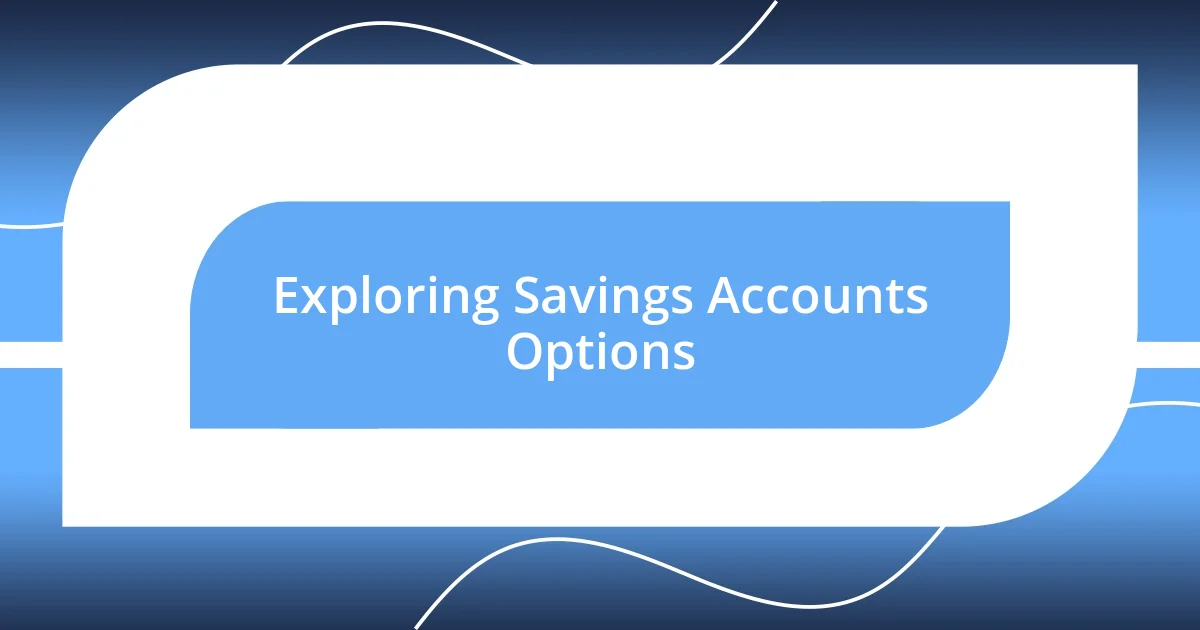Key takeaways:
- Establishing specific savings goals with deadlines transforms saving behavior and motivation.
- Creating a budget plan with tracked income and expenses, and setting spending limits is essential for effective money management.
- Automating savings and regularly reviewing strategies can enhance financial control and help achieve long-term goals.

Understanding Your Saving Goals
When I first started saving, I had a vague idea of what I wanted to achieve, but it was hard to stay motivated. I remember vividly the excitement that came when I decided to save for a dream vacation. Suddenly, that trip wasn’t just a distant thought; it became a tangible goal that I could visualize, making every small saving feel rewarding.
Establishing specific savings goals can significantly change your saving behavior. Have you ever noticed how powerful it is to declare a goal? For me, setting a deadline for my savings made all the difference. Instead of just putting money away, I could see it grow towards something meaningful, like a down payment on a home.
Sometimes, it helps to break those larger goals into bite-sized pieces. When I wanted to save for a new laptop, I focused on a smaller target: saving a bit each week. That approach not only felt manageable but also gave me a sense of progress as I watched my little savings pile grow, reinforcing my motivation to keep going.

Creating a Budget Plan
Creating a budget plan is essential to achieving those savings goals I’ve set. In my own experience, I found the process of mapping out my income and expenses both eye-opening and liberating. It was almost like a puzzle, to see where I could cut back and redirect my spending toward my goals.
Here are some key steps I take when creating my budget plan:
- Track Your Income: Know exactly how much money is coming in each month. I often feel a sense of control when I see this number clearly laid out.
- List Your Expenses: Break down fixed and variable expenses. I remember when I first categorized my spending—I discovered I was spending more on eating out than I realized!
- Set Spending Limits: Allocate specific amounts to each category. For me, having limits on “fun money” made it easier to enjoy guilt-free outings without overspending.
- Review and Adjust Regularly: Life changes, and so should your budget. I’ve learned the importance of sitting down every few months to tweak my plan based on new priorities or unexpected expenses.
It’s all about creating a structure that works for you, making sure that every dollar you earn has a purpose. This not only keeps me accountable but also brings a sense of calm knowing I’m steering towards my goals with intention.

Tracking Your Expenses Effectively
Tracking my expenses has transformed the way I view money management. I remember the first time I dotted down every single purchase I made in a month—what a revelation that was! By keeping a close eye on my daily spending, I could see patterns emerge. I realized just how much I spent on my daily coffee runs. It was a small amount in isolation, but combined, those daily treats added up to a significant part of my budget. This awareness pushed me to rethink my spending habits and seek alternatives—like brewing my own coffee at home, which not only saved money but also tasted just as good!
To track my expenses effectively, I found it best to choose a method that suits my lifestyle. Whether it’s using an app, a simple spreadsheet, or even a pen and notebook, the key is consistency. I started using a budgeting app that categorizes my spending automatically, making it a breeze to see where my money goes. This way, I’m never left in the dark about my financial health. I remember a month when unexpected car repairs hit me hard, and the app helped me adjust my spending in other areas to accommodate. It’s like having a financial dashboard that keeps me informed in real-time!
It’s important to review your tracked expenses regularly. I set aside time each week to analyze my spending, which often leads to small but impactful changes. For instance, there was a time when I noticed a spike in my grocery bill. After digging deeper, I understood that my impulse purchases were creeping up. By adjusting my buying habits, such as making a list before shopping, I managed to save quite a bit. It’s these little insights that not only keep my budget on track but also empower me to make better financial choices for the future.
| Tracking Method | Pros |
|---|---|
| Mobile App | Real-time updates and categorization |
| Spreadsheet | Highly customizable and detailed analysis |
| Pencil and Paper | Tactile experience and simplicity |

Cutting Unnecessary Expenses
When it comes to cutting unnecessary expenses, I’ve found a straightforward approach often yields big results. For instance, I had a stunning wake-up call when I realized that my monthly subscription services were quietly draining my wallet. After some reflection, I decided to take a hard look at each subscription, asking myself, “Am I truly using this?” A few services went, and the money saved started to add up, giving me more freedom to spend on what truly brought me joy.
Another area that surprised me was my grocery shopping. I used to shop without a list, practically letting my cravings dictate my cart. One day, after a particularly extravagant shopping trip, I felt that familiar pinch of regret. I challenged myself to create a detailed shopping list based on meal planning for the week ahead. Trust me, sticking to a list transformed my grocery trips from chaotic to focused. Has that ever happened to you? It can be liberating to say no to impulse buys, knowing you’re sticking to a plan that serves your budget.
Lastly, I learned to be mindful of my dining habits. There was a time when grabbing lunch out with colleagues felt like a harmless indulgence, but realizing I was spending an alarming portion of my paycheck on takeout hit hard. I challenged myself to bring my lunch at least three times a week, and honestly, the first few days were a struggle. But slowly, it became a fun adventure—experimenting with new recipes and enjoying homemade meals. I even found enjoyment in packing my lunch the night before, creating not just a money-saving habit, but a little moment of creativity in my day. It’s amazing how cutting back can lead to unexpected delights!

Exploring Savings Accounts Options
Savings accounts are an excellent gateway to managing your finances more effectively. When exploring options, I discovered that high-yield savings accounts often provide better interest rates than traditional accounts, allowing my money to grow a bit faster. I remember opening one and feeling that thrill as I watched my balance steadily increase each month, even with minimal deposits. Isn’t it satisfying to see your savings work for you?
Then there’s the world of specialized accounts, like kids’ savings or holiday savings accounts. I initiated a separate account for my child to instill the habit of saving early on. It not only helps teach them the importance of financial responsibility, but those accounts often come with higher interest rates or bonuses for reaching goals. Have you ever considered setting up something similar to motivate a young person in your life? It can create tangible excitement around saving!
Lastly, I found that checking the fees associated with any account is essential. I’ve had my share of surprises when monthly maintenance fees started eating away at my savings. Just last year, I switched to a no-fee online bank after realizing I could keep more of what I saved. By avoiding unnecessary expenses, I felt empowered to save more deliberately. It makes you wonder: how much could you save just by choosing the right account?

Automating Your Savings Process
Automating your savings process can be a game changer, and I can speak from experience on this one. I set up automatic transfers from my checking account to my savings account every payday, and it felt like a weight lifted off my shoulders. The best part? I didn’t even notice the money leaving my checking account, so it became easier to save without the temptation of spending it instead. Have you ever considered how much simpler saving could be with just one small adjustment?
Another approach I’ve adopted is using apps that round up my purchases to the nearest dollar and save the difference. The first time I noticed it working, I was genuinely surprised by how quickly those little amounts added up. I watched my spare change accumulate and realized that saving could be painless and even fun. Would you believe that something as simple as rounding up can lead to significant savings over time?
Finally, I’ve become a fan of setting specific savings goals within my automated system. Personally, I have a separate account specifically for travel savings, and seeing that balance grow towards a dream vacation motivates me more than anything. It’s exciting to contribute to a goal that fuels my wanderlust, and I find myself feeling more in control of my finances. What goals could you set that might inspire you to save more consistently?

Reviewing and Adjusting Your Strategies
Reviewing your savings strategies is an essential step in ensuring they continue to work for you. I remember the first time I sat down to analyze my monthly savings patterns—it was eye-opening! I discovered that some methods, which seemed effective initially, were no longer aligning with my goals. That realization pushed me to refine my approach and try new techniques. Have you ever taken a moment to reflect on whether your strategies still fit your current financial situation?
Adjusting my strategies doesn’t always require a major overhaul; sometimes, it’s the small tweaks that make a difference. For instance, I started tracking my expenses more closely, identifying areas where I could trim down. By eliminating a couple of subscription services that I rarely used, I freed up cash that I could channel into my savings. It felt liberating to make those decisions consciously. How often do you take a step back to evaluate what you can cut from your budget?
As you review your financial strategies, don’t hesitate to seek out fresh ideas or tools that could enhance your approach. I’ve found that surrounding myself with like-minded individuals—whether it’s through online forums or local groups—provides a wealth of inspiration and motivation. Sharing successes and challenges can spark new ideas. What communities could you tap into to support your savings journey?












